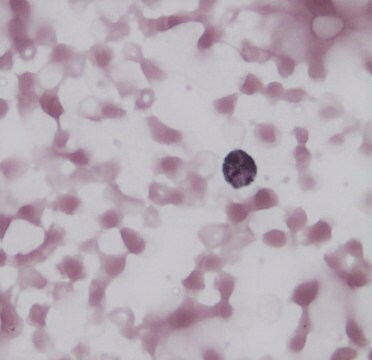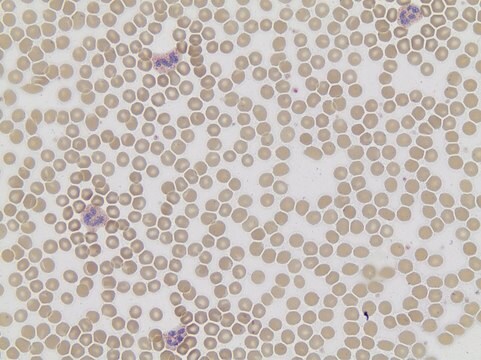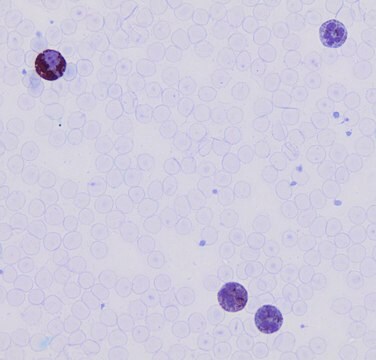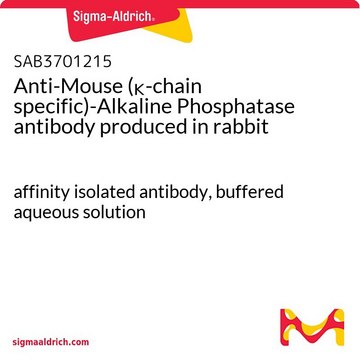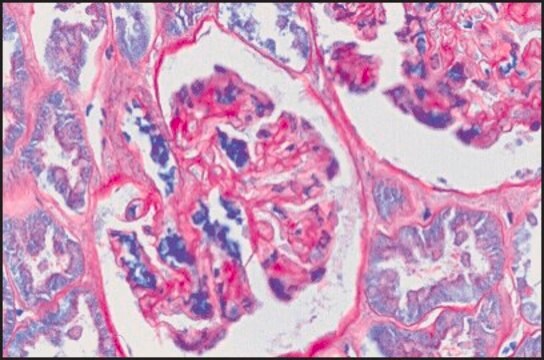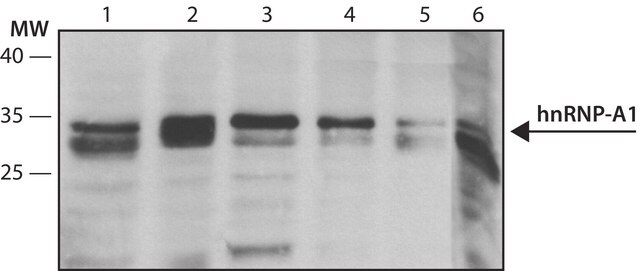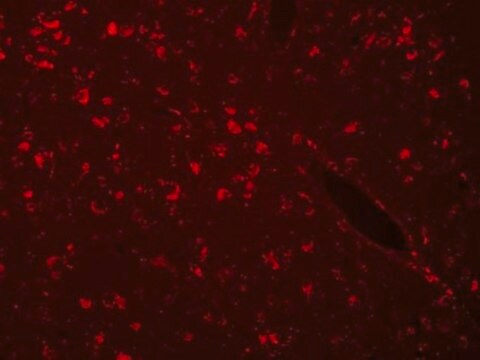MABS1276
Anti-TRAP-1 Antibody, clone TR-1
clone TR-1, from mouse
Synonyme(s) :
Heat shock protein 75 kDa, mitochondrial, TRAP-1, HSP 75, TNFR-associated protein 1, Tumor necrosis factor type 1 receptor-associated protein, TRAP-1
About This Item
IP
WB
immunoprecipitation (IP): suitable
western blot: suitable
Produits recommandés
Source biologique
mouse
Niveau de qualité
Forme d'anticorps
purified immunoglobulin
Type de produit anticorps
primary antibodies
Clone
TR-1, monoclonal
Espèces réactives
human
Technique(s)
immunohistochemistry: suitable (paraffin)
immunoprecipitation (IP): suitable
western blot: suitable
Isotype
IgG2aκ
Numéro d'accès NCBI
Numéro d'accès UniProt
Conditions d'expédition
wet ice
Modification post-traductionnelle de la cible
unmodified
Informations sur le gène
human ... TRAP1(10131)
Description générale
Immunogène
Application
Western Blotting Analysis: A representative lot detected TRAP-1 primarily in the inner mitochondrial membrane (IMM) and mitochondrial matrix (Mx), but not the outer mitochondrial membrane (OMM) or the intermembrane space (IMS) of fractionated mitochondria preparations from HeLa cells (Yoshida, S., et al. (2013). Proc. Natl. Acad. Sci. U. S. A. 110(17):E1604-E1612).
Signaling
Qualité
Western Blotting Analysis: 0.5 µg/mL of this antibody detected TRAP-1 in 10 µg of HeLa cell lysate.
Description de la cible
Forme physique
Stockage et stabilité
Autres remarques
Clause de non-responsabilité
Vous ne trouvez pas le bon produit ?
Essayez notre Outil de sélection de produits.
Code de la classe de stockage
12 - Non Combustible Liquids
Classe de danger pour l'eau (WGK)
WGK 1
Point d'éclair (°F)
Not applicable
Point d'éclair (°C)
Not applicable
Certificats d'analyse (COA)
Recherchez un Certificats d'analyse (COA) en saisissant le numéro de lot du produit. Les numéros de lot figurent sur l'étiquette du produit après les mots "Lot" ou "Batch".
Déjà en possession de ce produit ?
Retrouvez la documentation relative aux produits que vous avez récemment achetés dans la Bibliothèque de documents.
Notre équipe de scientifiques dispose d'une expérience dans tous les secteurs de la recherche, notamment en sciences de la vie, science des matériaux, synthèse chimique, chromatographie, analyse et dans de nombreux autres domaines..
Contacter notre Service technique